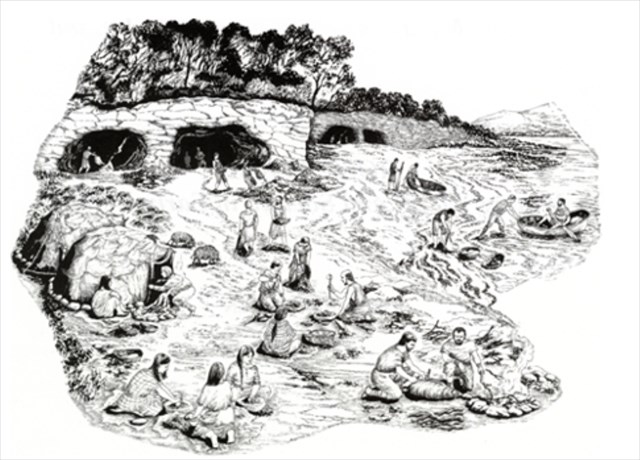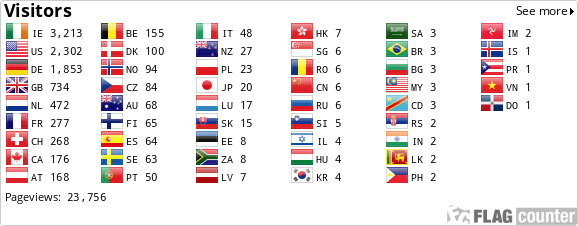Geology of the Mine
In all periods at Ross Island mining focused on the copper rich horizon within the local limestone geology. This rich mineral deposit is confined to a small part of the southern coastline of the island where copper minerals streak the blue limestone rocks. This mineralisation extends to a maximum depth of only 13-16 metres along the lake shore.
The mine is located on a bed of copper-rich limestone, principally containing the yellow mineral chalcopyrite and the grey tennanite ore. This bedded deposit is bordered on the eastern side by a vein -type structure, The Blue Hole, containing a rich deposit of copper, lead and zinc ore. The mineralisation at Ross Island also has a significant silver content which may have been extracted in ancient times  Bronze Age Mine
Bronze Age Mine
Bronze Age Mine
The mines here came into use about 2400 BC and remained until approx1900 BC. Excavations here in the 1900s uncovered tens of thousands of stone hammers used to work on them. The mines were worked by fires being lit against the rock face showing traces of copper mineral and using hammers to pound the heat fractured the rock. The mineralised rock was hand sorted outside the mine and then taken to the adjacent camp where the copper ore was further sorted. It was finally reduced to metal by smelting in pit furnaces.The resulting metal was taken to various settlements around Killarney where it was fashioned into copper and bronze axeheads, daggers and other objects.
You are standing in front of the western mine, which extends over 8 metres into the limestone. During the 500 years the mines were in use they may have produced as much as 35,000 tonnes of arsenical copper ore.

The Blue Hole Mine today
The Industrial Mine - Stage 2>
During the 19th centuary the mines here were reopened to meet the demands of the industrial revolution.Approximatly 5000 tons of ore were raised . At the Blue Hole, where you are now standing, the mining was open-cast, Across the Western Mine numerous shafts were sunk to a depth of 13-15 metres by gangs of men using blasting powder and iron tools. The ore raised was crushed and hand sorted in 'bucking sheds' before the final washing and separation in the 'jigging house'. The concentrated ore was shipped from Trallee to Wales for smelting.
Due to seious problems with flooding from the adjacent Lough Leane and the growth of tourism in Killarney the mines were eventually closed, the shafts were filled in, buildings demolished and the mines surface workings were landscaped.
To Log This Cache
Please contact me through my profile with the answer to the following questions. Please feel free to log this cache if you feel you have the right answers, if there is a problem I will contact you.
1. At the Bronze Age mine you can see the opening of the mine, it is behind the fencing. Approximately how high and how wide is the opening?
2. Look around the area of the Bronze Age mine, where do you think the camp was situated where the ore was sorted, why did they choose this place?
3. At the Industrial Mine site you can see that the water in the Blue Hole mine is a different colour from the nearby lough, why do you think this is?.
4. In which year did the mine finally close.
